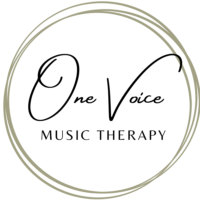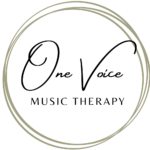What is Music Therapy?
A big misconception some people have is that you need to be “musical”, “creative”, or able to “do art”. There is NO PRIOR experience in the arts necessary in order to benefit from any one of the creative arts therapies.
Music therapy is for you if you:
- Want to deal with aspects of your life that feel stuck in an unhealthy pattern/loop
- Are struggling with childhood trauma that is causing harm and discomfort in your adult life
- Are suffering from mental health diagnosis’ such as depression, anxiety, bipolar mood disorder etc.
- Want to learn to identify, express, explore and regulate your emotions
- Need a space to find rest and recovery after/during burnout
- Are on the journey of addiction recovery
- Want an alternative way to interact with your difficulties – talking doesn’t come easy to all
- Are struggling to articulate how you feel in words and find the arts useful to express your inner world more accurately
What happens in a music therapy session?
Some believe that music is a universal language that can surpass words. For this reason, the music in the sessions is not only the “language” that we use but it often gives greater insight and perspective to present issues as it surpasses our normal “logical” thinking. Each session may look different depending on the client’s need, but generally involve:
- Music improvisation using various instruments
- Moving to music in order to engage the body
- listening to recorded or live music
- Song-writing
- Voicework (anything to do with vocalising – this is not only/equal to singing)
- Visual arts (drawing, clay, pastels, etc.) to gain a different perspective on presenting issues
- Verbal processing of creative products
While music and the arts are at the core of music therapy, a client may simply need to talk. These Creative methods often open up discussion and verbal processing of the material that emerges The creative process can allow access to what lies beneath the conscious surface. What we cannot initially express in words, we may be able to show through sound, symbol, image, or movement The arts offer a sense of safety – it can feel more manageable to work with challenging material when it is in a creative and perhaps less threatening form. Music therapy is suited to both individuals and groups. The length of therapy depends on the client’s needs but the process might be brief (up to 10 sessions) or longer-term.
Piano improvisation with intention of “feeling the emotions of being in the midst of a Pandemic”
The Arts Therapies in South Africa
In South Africa, music therapy is one of four modalities that fall under the creative arts therapies. Music therapy is the use of music as a therapeutic intervention with people of all ages in a process designed to address emotional, cognitive, physical, transpersonal, social, and community needs. Music therapy aims to develop potential and improve quality of life through prevention, treatment, and rehabilitation. In all instances, the use of music is clinically informed, which involves a variety of clinical techniques implemented during musical improvisation, performance, composition, movement, vocal work, and music listening. In some instances, the musical activities may extend towards and include extra-musical elements such as talking, drama, art, and story-telling.
For more information about the arts therapies in South Africa visit: sanata.org
Music Therapy Approaches and Techniques
Within my practice, I focus both on active techniques (where clients play a role in creating music) and receptive techniques (that involve listening or responding to music). There are various Music Therapy approaches, some of the approaches I draw on during sessions include:
Analytical Music Therapy
Analytical music therapy encourages you to use an improvised, musical “dialogue” through singing or playing an instrument to express your unconscious thoughts which you can reflect on and discuss with your therapist afterward.
Nordoff-Robbins music therapy
Also called creative music therapy, this method involves playing an instrument (often a cymbal or a drum) while the therapist accompanies using another instrument. The improvisational process uses music as a way to help enable self-expression.
The Bonny method of guided imagery and music (GIM)
This form of therapy uses classical music as a way to stimulate the imagination. In this method you explain the feelings, sensations, memories, and imagery you experience while listening to the music.
Vocal psychotherapy
In this format, you use various vocal exercises, natural sounds, and breathing techniques to connect with your emotions and impulses. This practice is meant to create a deepr sense of connection with yourself.
During a music therapy session we might make use of various techniques to address the goals and expectations we set our for the therapeutic process. I woke within a client-centred manner, which is basically therapy jargon for each client is different and I adapy my way of working to try and meet your needs.

